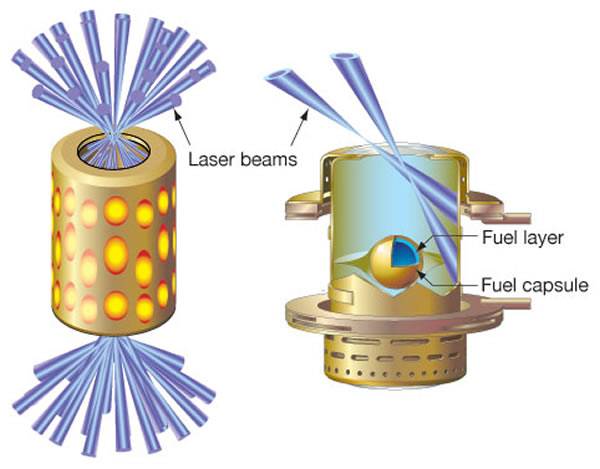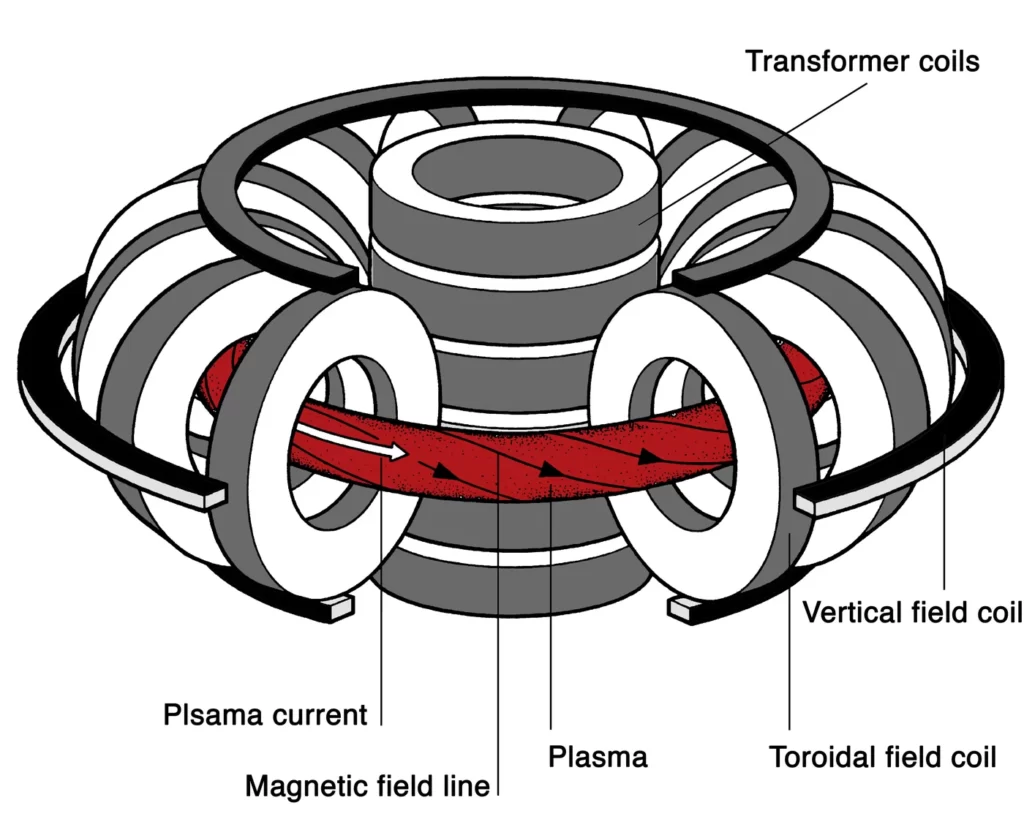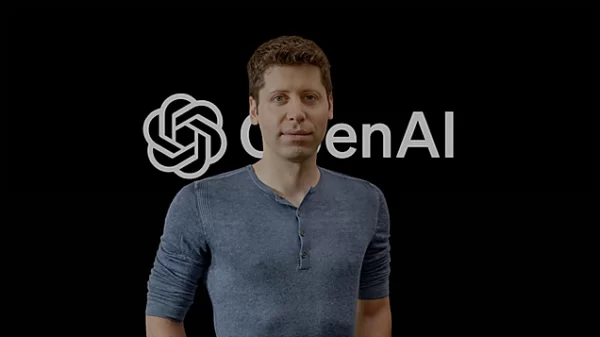Energy is the most invaluable resource in our modern world. It fuels progress, production, and every aspect of our daily lives. Without energy, the modern world as we know it would cease to exist. However, the current energy sources we heavily rely on, such as fossil fuels, come at a great cost to the environment. They contribute to pollution, climate change, and resource depletion. Is there a better way to meet our energy needs without sacrificing the health of our planet? The answer lies in Fusion Energy.
On December 5th, 2022, a momentous achievement took place at the Lawrence Livermore National Laboratory in California. For the first time in history, Fusion Energy surpassed energy input, marking a significant milestone. This breakthrough challenges the skepticism surrounding the feasibility of Fusion Energy. While this accomplishment calls for celebration, it also prompts a deeper exploration into its implications.
From Fission to Fusion: A Paradigm Shift in Energy Production
Since the devastating use of atomic bombs in the 1940s, scientists quickly realized the potential of a different approach to energy production. Instead of splitting atoms, known as fission reactions, they envisioned a process of fusing atoms together to release energy, known as fusion reactions. If harnessed correctly, fusion reactions could offer a safe, clean, and virtually limitless energy source.
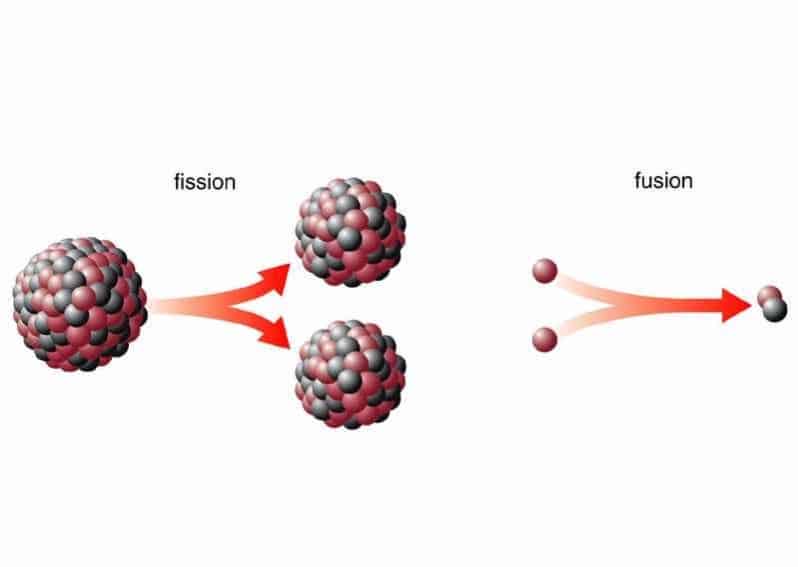
The advantages of Fusion Energy are more than just impressive; they are game-changing. Unlike traditional nuclear bombs or power stations that rely on fission reactions, fusion reactors produce minimal long-term radiation and radioactive waste. The primary byproducts of fusion reactions are helium and neutrons. Additionally, Fusion Energy has minimal environmental impact, and its fuel source is abundant. Essentially, wherever water exists, there is potential fuel for a fusion reactor. However, it is crucial to address a potential challenge, which we will explore further.
Safety and Unprecedented Energy Output: The Power of Fusion
One of the most significant advantages of Fusion Energy is the inherent safety it offers. Meltdowns, a major concern with traditional nuclear power, are virtually impossible with fusion reactors. Maintaining a fusion reaction requires a continuous energy input. In the event of any issues or disruptions, the reaction naturally ceases within seconds due to the lack of sustaining energy. This inherent safety feature provides peace of mind and eliminates the catastrophic risks associated with nuclear accidents.
Moreover, the energy output of fusion reactions is unparalleled. Atom fusion generates 4 million times more energy than burning coal or gas and four times more energy than nuclear fission, the process of splitting atoms apart utilized in conventional power stations. The potential to harness such colossal amounts of energy could revolutionize our energy landscape and provide a sustainable solution for meeting the ever-increasing global energy demand.
Debunking Misconceptions: Fusion Energy vs. Nuclear Disasters
At this point, one may wonder whether Fusion Energy carries the same risks as nuclear disasters or atomic bombs. The answer lies in understanding the fundamental differences between fusion and fission reactions. When atoms are split apart in fission reactions, they release harmful radiation. However, in fusion reactions, where atoms are fused together, the harmful radiation is significantly reduced.
It is worth noting that fusion is indeed a component of hydrogen bombs, but its purpose is to facilitate the fission process. The fusion element involves uranium, which remains a highly dangerous material. In contrast, fusion itself is a natural occurrence, evident in the sun, our colossal fusion reactor in the sky. If we can replicate and control this process on Earth, the impact would be unparalleled in the course of human history. Though the path to achieving such a feat may appear daunting, the potential benefits make it a venture well worth pursuing.
Recognizing the immense potential of Fusion Energy, scientists worldwide have dedicated their efforts to make it a reality. The pursuit of fusion technology represents a global collaboration aimed at unlocking a clean, safe, and abundant energy source. To comprehend the intricacies of fusion energy, let us delve deeper into its underlying principles.
Understanding Atomic Fusion and Energy Release
Under ordinary circumstances, atomic nuclei bear a positive electrical charge, resulting in a natural repulsion between them. Like estranged friends, they prefer to keep their distance. However, when heated to temperatures reaching millions of degrees, the electrons bid farewell and depart, leaving the nuclei to vibrate erratically within a superheated plasma.
In this plasma state, the positively charged nuclei gain sufficient speed and energy to overcome their mutual aversion. Once they approach closely enough, a new force comes into play—the strong nuclear force, acting at short distances. When this force takes hold, the nuclei merge and fuse, resulting in the liberation of energy.
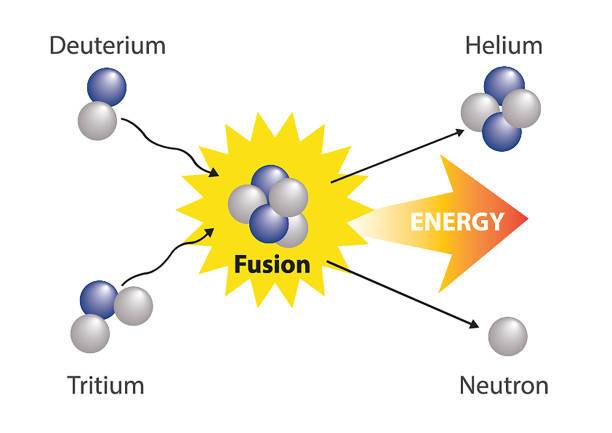
What’s fascinating is that a substantial amount of energy can be generated from a relatively small amount of matter. Most of you are familiar with the equation E = mc². It holds immense power. To put things into perspective, the conversion of a mere 700 milligrams of mass into pure energy is equivalent to the destructive force of the bomb dropped on Hiroshima.
Hydrogen and helium are commonly utilized elements in fusion reactions because they require less energy to overcome their inherent repulsion. As a side note, celestial bodies such as the Sun and other stars can surpass the repulsion of atomic nuclei due to their tremendous mass, which generates immense gravity. Essentially, gravity compresses the atoms together, facilitating fusion.
Now, back to Earth. How can we surpass nature’s resistance and fuse these atoms together? The key lies in propelling the atoms at incredibly high speeds within a confined space. The objective is to create a state of matter with high energy.
Internal Confinement Fusion (ICF): Harnessing the Power of Lasers
There are two primary methods to achieve this, but for now, let’s focus on internal confinement fusion (ICF). In this approach, a minute capsule containing hydrogen fuel is subjected to a brief burst of laser energy, lasting less than a billionth of a second. Why such a short duration? If the lasers were fired for an extended period, the energy would disperse over a larger area, resulting in inadequate pressure and temperature within the fuel target to trigger fusion.

Following the laser bombardment, the hydrogen fuel undergoes rapid heating and expansion, leading to the formation of a reflective shock wave that compresses the fuel. The density increases significantly, causing the nuclei to be in close proximity, thereby enhancing the probability of collision. Under these conditions, some nuclei fuse, and a portion of their mass is directly converted into energy, aligning with the principles of E = mc² discussed earlier.
The Lengthy Journey of Atomic Fusion Energy
You may wonder why the development of atomic fusion energy has been a slow process spanning decades. As eloquently stated by the publication Fox, “Fusion reactors so far are like using a blowtorch to light a match. Sure, it works, but the energy that you’ve put into light that match was excessive for the small flame of energy that you get out.”
Overcoming the challenges of atomic fusion energy has indeed been a formidable task. Researchers have been striving to strike a balance between input and output, aiming to achieve net energy gain—a scenario where the energy released from fusion reactions surpasses the energy required to initiate and sustain them. While progress has been gradual, it underscores the complexity of controlling and harnessing fusion reactions effectively.
Unlocking the Potential of Atomic Fusion Energy
Despite the ongoing challenges, the pursuit of atomic fusion energy holds immense promise. Scientists and engineers worldwide are dedicated to developing innovative approaches to achieve sustainable and abundant energy production through controlled fusion reactions. The potential benefits are tremendous—clean, safe, and virtually limitless energy generation, with minimal environmental impact.
As research and technological advancements continue, the day when atomic fusion energy becomes a practical and commercially viable reality draws closer. With each step forward, humanity edges nearer to a future powered by the virtually boundless energy contained within the heart of atomic fusion.
Revolutionizing Fusion Energy: Achieving Ignition Milestones
In the pursuit of fusion energy, substantial progress has been made over the years. However, it wasn’t until the United States Department of Energy wholeheartedly embraced fusion energy in 1997 that significant advancements started to materialize. This move was spurred by the National Academy of Sciences, an official advisor to the US government, affirming fusion energy as a vital goal for America.
The Quest for Ignition
At the core of fusion energy’s viability lies the achievement of ignition, which entails extracting more energy from the fuel target than the energy input. To realize this ambitious goal, the National Ignition Facility (NIF) was constructed, with its development spanning from 1997 to 2009.
Initially, progress at the facility encountered obstacles. By 2012, only 10 percent of the necessary ignition conditions had been achieved. Consequently, the NIF underwent conversion, becoming a platform for weapons research, leaving Americans disheartened. Meanwhile, as early as 1997, European researchers had already achieved 67 percent of the required ignition conditions, employing a method deemed more feasible. We’ll explore this further later in the article. Despite setbacks, the American team persisted in their pursuit, gradually narrowing the gap.
A Breakthrough Achievement
In a momentous leap forward, the year 2021 marked a significant milestone for the American team. They reached 70 percent of the ignition conditions, bringing them closer to their ultimate goal. Then, in late 2022, the team implemented improvements to the fuel target design, leading to a remarkable breakthrough—a staggering 154 percent of the required ignition conditions were achieved. The fusion reaction yielded more energy than was invested.

On December 5th, 2022, a pivotal moment arrived as the American team powered up one of the world’s most potent lasers. With anticipation building, 192 laser beams converged on a minuscule fuel pallet. Two megajoules of energy were delivered through the laser beams, resulting in three megajoules of energy output. This groundbreaking accomplishment positioned America ahead of the European researchers. Jennifer Granholm, the Energy Secretary, proudly declared, “This is what it looks like for America to take the lead, and we’re just getting started.”
Unleashing Global Excitement
The scientific community erupted with excitement and jubilation in response to the achievement. Carolyn Currents, a plasma physicist at the University of Michigan, effused, “The result clearly surpasses that mark, leaving no question that they have achieved fusion ignition in the laboratory.” Tammy Ma, the leader of the lab’s laser fusion research initiatives, received the momentous news while awaiting a flight, and she couldn’t contain her elation. Tears streamed down her face as she joyously jumped and shook with enthusiasm. Onlookers at the airport were perplexed by her exuberance.
Unveiling the Laser’s Might
The laser beams, rapidly amplified as they traversed back and forth, illuminated the environment within a fraction of a second. These extraordinary conditions emulate the searing heat and extreme density found at the center of the Sun. The colossal laser energy expenditure is necessary to achieve such high-energy densities. Remarkably, this intense barrage of energy vaporizes a target so minute that it is nearly imperceptible. Can I hold this thing? Absolutely!
The precision required in manufacturing these fuel capsules is unparalleled. The shells exhibit near-perfect roundness, boasting a surface smoothness 100 times superior to that of a mirror. Just consider that for a moment! Anything short of near perfection would introduce irregularities, hindering the uniform implosion of atoms and resulting in a fusion fizzle. Hence, the capsules must approach flawlessness with utmost precision, rendering them some of the most impeccably crafted items on Earth. Astonishingly, around 1,500 shells are produced each year, with only 150 reaching the desired level of perfection.
The Potential of Fusion Energy: Optimizing Laser Efficiency and Fuel Sources
The development of fusion energy holds immense promise for our future energy needs. However, there are several challenges that need to be addressed to make fusion a viable and practical source of abundant, clean energy. In this article, we will explore the current limitations of fusion technology and discuss potential solutions to overcome these obstacles.
1. Engineering Optimization: A Path to Practicality
While the recent breakthroughs in fusion research are remarkable, the National Ignition Facility primarily serves as a research laboratory rather than a power producer. To harness this new approach and build a functioning fusion reactor, significant engineering optimization is required. Designing a practical fusion reactor is an engineering feat in its own right, and it poses substantial challenges that need to be tackled.
2. Laser Power and Energy Efficiency
One of the limitations of the current fusion research is the finite amount of energy provided by the lasers. Increasing the size of the target would require larger lasers, which is not a feasible solution. However, researchers have made progress in maximizing laser efficiency. For instance, on December 5th, they used a thicker target to preserve its shape and found ways to boost the power of laser shots without damaging the equipment. These advancements contribute to the overall effectiveness of fusion experiments.
3. Energy Output and Laser Power Considerations
While news reports highlight that the lab produced 1.5 times more energy than was used to trigger the fusion reaction, it is important to consider the broader picture. This measurement solely accounts for the laser energy hitting the fuel target, overlooking the energy required to power the lasers themselves. To make fusion a viable energy source, the total energy output must be approximately 66 times greater than the energy consumed during the process. Addressing this challenge is crucial for fusion technology to contribute significantly to the energy grid.
4. Laser Shot Frequency and Electricity Demands
Another obstacle lies in the limited firing capacity of the facility, which can only perform a few laser shots per day. The electricity required for these shots can sometimes lead to blackouts within the laboratory. To achieve the practical operation of a fusion reactor, an average rate of approximately 10 shots per second would be necessary. Developing the infrastructure to sustain such frequency without compromising reliability is a critical area for improvement.
5. Fuel Source and Tritium Scarcity
Fueling fusion reactors involves two hydrogen isotopes: deuterium and tritium. While deuterium is readily available, with approximately one in every 5,000 hydrogen atoms in the ocean being deuterium, tritium is an extremely rare and expensive resource. The production cost of tritium amounts to approximately $30,000 per gram, posing a significant challenge to obtaining an adequate fuel supply. However, fusion reactors themselves produce tritium as a byproduct, and effective capture and utilization methods can help overcome this scarcity issue. The current availability of commercially accessible tritium is limited, but future fusion reactors could potentially generate a larger supply.
6. Optimizing Hydrogen Fuel Combustion
Efficient combustion of hydrogen fuel is another area of focus for improving fusion energy. The National Ignition Facility’s experiments showed that only a small fraction of the fuel in the capsule underwent combustion. Enhancing the burn-up rate of the fuel can significantly increase the overall gain. Redirecting laser energy effectively to compress hydrogen atoms is vital in achieving this goal. Upgrading laser technology is one aspect to consider, as modern designs can be up to 20% efficient in converting electricity into laser light, compared to the 1% efficiency of the current lasers used at the facility.
The Future of Fusion Energy: Advancements and Possibilities
In the realm of energy production, the pursuit of fusion energy has gained significant momentum in recent years. The Lawrence Livermore National Laboratory, under the guidance of Kim Boodle, has been exploring groundbreaking methods to unlock the potential of nuclear fusion. With the aim of generating an abundance of clean and sustainable energy, researchers have delved into two primary approaches: laser-based internal confinement and magnetic confinement fusion.
Laser-Based Internal Confinement Fusion
The National Ignition Facility (NIF), built upon 1980s laser technology, has been a focal point of research and experimentation. By leveraging improved lasers and enhancing fuel targeting precision, the NIF presents an opportunity to achieve substantial energy output. Drawing an analogy to the evolution from the first transistor to a fully functioning silicon chip, Kim Boodle envisions the NIF’s current state as a stepping stone toward practical fusion energy. However, to materialize this vision, significant engineering breakthroughs are still required. While the NIF’s viability has been demonstrated, the question arises: Is it the optimal path forward or a potential dead end? Exploring alternative approaches is key to unlocking the true potential of nuclear fusion.
Magnetic Confinement Fusion
Complementing laser-based internal confinement fusion, another method has gained traction: magnetic confinement fusion. This technique utilizes superconducting magnets, electromagnets, microwaves, and particle beams to heat hydrogen gas and transform it into plasma. The plasma, confined within a donut-shaped ring, is subjected to intense pressure from the magnetic fields. As the atoms within the plasma become densely packed and reach a sufficiently high temperature, fusion reactions occur, releasing vast amounts of energy. Magnetic confinement fusion has emerged as the widely accepted approach and was perceived as the frontrunner until December 2022.
The International Thermonuclear Experimental Reactor (ITER), currently being constructed in southern France, exemplifies the application of magnetic confinement fusion. The project aims to leverage fusion reactions to generate heat, which, in turn, can be utilized to produce steam and drive turbines. This conventional method of utilizing steam for energy production has proven effective for various energy sources, including coal and nuclear. While seemingly inefficient, advancements continue to be made, presenting the possibility of more efficient techniques.
Post-Compression: A Novel Path to Nuclear Fusion
In recent times, a third method has gained attention: post-compression, an innovative nuclear fusion generator. Unlike conventional approaches that rely on steam generation, post-compression offers the potential for direct electrical energy generation. Tenta Helion’s sixth-generation fusion generator has garnered considerable interest among nuclear physicists worldwide. Drawing upon knowledge derived from ion propulsion in space, this unique generator utilizes two mirrored rings of plasma within a reactor. In a fraction of a second, the rings are sequentially fired towards each other, resulting in a powerful collision. The collision, facilitated by activated magnets, compresses the plasma rings toward the center, converting the ions’ kinetic energy into thermal energy. The increased temperature surpasses the electromagnetic repulsion between ions, allowing fusion to occur. This fusion process yields new atoms and releases an immense amount of energy.
The advent of Tenta Helion’s fusion generator showcases that the realm of fusion energy is not confined to the realm of fantasy. Real progress is already underway, as nuclear physicists globally endeavor to unravel the inner workings of this groundbreaking machine.
Advancements in Fusion Technology and the Journey Ahead
I. Unveiling the Astonishing Marvel: Fusion Energy in the Making
The remarkable achievements of Helion are nothing short of astounding. The fusion process in this cutting-edge apparatus orchestrates a delicate symphony of electronics, propelling two plasma rings into a turbulent collision and expertly capturing this event within a magnetic trap at its core. Gradually, the trapped ions compress, ultimately defying one of the universe’s most formidable forces, resulting in the birth of novel elements deep within the heart of this remarkable human invention.
II. Pioneering the Next Frontier: Helion’s Endeavor for Clean, Efficient Energy
Yet, Helion’s pursuit of revolutionizing energy for the betterment of humanity has not reached its culmination. Their groundbreaking project, Polaris, signifies the next stage in their journey towards harnessing electricity. However, this venture poses a significant challenge, as it requires the incorporation of state-of-the-art electronics to ensure swift and seamless operation.
The Future of Fusion Energy: Challenges and Potential Breakthroughs
I. The Ongoing Quest for Fusion Energy: Nearing Reality
In retrospect, while fusion energy still largely exists as an ambitious aspiration, the National Ignition Facility has propelled us forward, significantly narrowing the gap between dreams and reality. However, it is crucial to acknowledge that there remains substantial work ahead, likely spanning several decades. Yet, in the realm of scientific exploration, the potential for unexpected breakthroughs lingers.
II. Emerging Avenues for Progress: A Glimpse into Promising Horizons
The landscape of fusion energy research is dynamic and ever-evolving, presenting the prospect of unforeseen advancements. Materials science, novel methodologies, and various technological facets hold the potential to accelerate progress and pave the way for a long-awaited breakthrough. My curiosity is particularly piqued by independent groups, such as Helion, and their ingenious pulsed compression technique. With open collaboration between scientists and the possibility of future AI systems lending their support, the realization of fusion energy may transcend the realm of fantasy.
In essence, fusion energy embodies the promise of a sustainable future, and recent developments have propelled us toward this grand vision. Helion’s groundbreaking achievements and ongoing endeavors serve as a testament to human innovation and determination. As we advance further, embracing collaboration and embracing the untapped potential of emerging technologies, we inch ever closer to a reality where fusion energy becomes an integral part of our lives.

